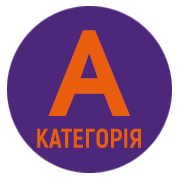IMPROVING THE LEVEL OF PHYSICAL FITNESS ACCORDING TO THE “TABATA” METHOD FOR FUTURE DESIGNERS
DOI:
https://doi.org/10.32782/2522-1795.2022.10.12Keywords:
physical education, physical fitness, Tabata method, future designers.Abstract
The article highlights the issue of physical fitness of student youth in higher educational institutions.The peculiarities of the influence of the “Tabata” method on the level of physical fitness of future spe-cialists of designers studying at the Ukrainian Academy of Printing have been studied. It is possible tomotivate students to physical education classes through the introduction of new innovative technologiesand techniques that will help improve the physical and mental performance of students. The aim is toassess the impact of the Tabata technique on the physical fitness of future designers. Material. The peda-gogical experiment was attended by 70 students aged 18–20. Students were divided into EG – 35 people and KG – 35 people. The study took place during the 2020–2021 school years. Results. Tabata studentssignificantly improved their performance on such control tests as long jump, shuttle run (4 × 9 m), torsotilt forward from a sitting position. There were no significant changes in the students who attended the tra-ditional program. According to the results of the study at the end of the pedagogical experiment, futuredesigners showed the following results of the level of physical fitness, where 49 % showed an averagelevel of training and it was the highest, above the average level showed 24 % and below 20 % and only7 % for female students-designers. Conclusions. According to the results of testing students-designers, itcan be concluded that almost half of the total number of students (49 %) correspond to the average levelof physical fitness, which corresponds to a satisfactory grade, above the average level (grade good) showed24 % of students. High level of preparation (excellent grade) 7 % of respondents and below average level(poor grade) has 20 % of students.According to the results of the pedagogical experiment, it can be stated that classes according tothe “tabata” method are more effective for improving the level of physical fitness of future designers thanthe traditional curriculum in physical education for university students.
References
Булейченко О. В. Використання сис-теми Табата в процесі фізичного вихованнястудентів спеціальної медичної групи в умо-вах педагогічного вузу. Науковий часопис НПУ імені М. П. Драгоманова, 2016. 2(71).С. 55–58.
Іващенко М. В. Комплекси високоінтен-сивних вправ у самостійних заняттях студен-тів педагогічного університету. Інноваційнапедагогіка. 2019. Вип. 19. Т. 3. С. 98–101.
Кириченко Е., Терехина О., Луценко С.,Кубатко А. Система Табата в процессе физи-ческой подготовки студентов ВУЗ. Фізичнакультура, спорт та здоровя нації : зб. наук.праць. Вип. 7(26). Вінниця : ТОВ «Планер»,2019. С. 80–84.
Кокарева С. М., Кокарев Б. В. Обґрунту-вання використаних вправ TRX та методикиІзумі Табата для організації занять із загальноїфізичної та спеціальної рухової підготовкиспортсменів у ігрових видах спорту. Зб. наук.праць. Житомир : ФОП Євенюк О. О., 2016.Вип. 2. С. 69–73.
Кокарева С. М. Система Табата якнапрямок удосконалення процесу підготовкифутболістів. Фізична культура, спорт та здо-ровя нації. Вінниця : ТОВ «Планер», 2017.Вип. 3. С. 314–319.
Пашкевич С., Бондаренко Н., Ніку-ліна Г. Effect of Tabata Methods as IntervalTraining Variant on Physical Performanceof Pedagogical University Students. Teorìâ TaMetodika Fìzičnogo Vihovannâ, (2), 47–51.
Федорина Т. Є., Арабаджи А. Ю.,Петренко В. І. Використання інновацій-них підходів при проведенні занять з фізич-ного виховання для студентів НТУ «ХПІ».Здоров’я нації і вдосконалення фізкультур-носпортивної освіти : матеріали 1-ї Міжнар. наук.-практ. конф., 3–4 жовтня 2019 р. / гол.ред. А. В. Кіпенський; Нац. техн. ун-т «Хар-ків. політехн. ін-т». Харків : Мадрид, 2019.С. 278–279.
Халайджі С. В., Павлова Н. В. Заохо-чення студентів до занять фізичною культу-рою шляхом використання в освітньому про-цесі системи Табата. Зб. тез доп. 79-ї наукконф. викл. акад., Одеса, 16–19 квіт. 2019 рОдес. нац. акад. харч. технологій; під заг. редБ. В. Єгорова. Одеса, 2019. С. 427–429.
Швець О. Застосування тренуваль-ного методу tabata на заняттях з фізичноговиховання факультативних груп напрямку«силові та кардіо тренування». Особливоствикладання дисципліни Фізичне вихованняу ЗВО в сучасних умовах : матеріали круглогостолу / гол. ред. В. М. Мірошніченко; ред. колО. Ю. Брезденюк, О. П. Швець, В. С. БілоусТ. В. Осаволюк, Вінницький державний педа-гогічний університет імені Михайла Коцю-бинського. Вінниця, 2021. Вип. 3. С. 34.
Farah A. Testing Tabata High-IntensityInterval Training Protocol in Hispanic ObeseWomen. Journal of Women’s Health PhysicalTherapy, 2014. Vol. 38. N. 3. P. 99–103.
Fortner H. A. Differential Response ToTabata Interval Versus Traditional KettlebellTraining Protocol. International Journalof Exercise Science : Conference Proceedings.2013. Vol. 9. No. 1. Р. 21.
Tabata I. Effects of moderate-intensityendurance and high-intensity intermittenttraining on anaerobic capacity and VO2max.I. Tabata Med Sci Sports Exerc. 1996. № 28(10).Р. 27–30. URL: http://www.bodyrecomposition.com/research-review/effects-of-moderate-intensity-endurance-and-high-intensity-intermittent-training-on-anaerobic-capacity-and-vo2-max.html/.
Downloads
Published
How to Cite
Issue
Section
License

This work is licensed under a Creative Commons Attribution-NonCommercial-NoDerivatives 4.0 International License.












